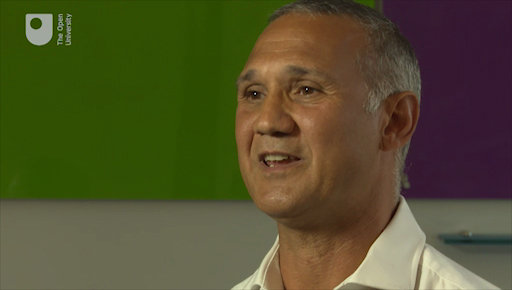6 Reflecting on leadership for long-term collaboration
So what does all of this mean for leadership? To address this question, you will return to some of the key underpinnings of the ideas about leadership which you have encountered in this course (you can also read more about our approach to leadership in our earlier course Developing leadership practice in voluntary organisations [Tip: hold Ctrl and click a link to open it in a new tab. (Hide tip)] ).
As you have seen, we think about leadership for inter-organisational collaboration as relational, concerned with process, related to context (and here specifically to the impact of policy within that context) and engaged in identity-making. We suggest that sustaining collaboration over the longer term requires leadership which interweaves the relational with process, policy and identity, each of which continually shifts and changes. This is a complex idea, and you are not expected to have a complete understanding of how the collaborative fabric develops and is continually re-made (we certainly don’t – we are still learning about this). Instead you have been offered this as a metaphor for thinking about collaborative leadership over the longer term.
Activity 4 Leadership practices
Think back through the course and the different leadership practices you have encountered. List all of those practices in the left hand column of the Leadership practices template here. This task has been started for you, but think of as many as you can, either mentioned explicitly in the course, or brought to mind by your reading.
Now, add brief examples from your own experience under each of the four elements of the collaborative fabric. Again, this has been started for you from some of our own experiences, which you can see below.
| Leadership Practices | Policy | Identity | Processes | Relationships |
| Asking challenging questions | Challenging local policy at a council committee | |||
| Story telling | Telling stories about the impact of our work that change the way our partners see us | Telling stories about our work through key informal contacts | ||
| Building coalitions | Developing a joint training programme with the local authority | |||
| Advocating | Speaking on behalf of families in need at a meeting with the CGC | |||
| Recognising points of power | Recognising opportunities to challenge policy | |||
| Negotiating |
Finally, in your learning journal, write about how these practices impact collaboration for the longer-term. What challenges does this give you in your own practice for achieving long-term inter-organisational collaborative relationships? Are there some practices you need to develop further with a particular focus on the longer-term? Remember, in a distributed model of leadership, not all of these practices have to be your responsibility – think about how they are shared across the organisation (and beyond) over the longer-term. Make sure you title the post with the week number and the number of this activity, Week 8 Activity 4.
Comment
Bringing a longer-term perspective to the practices of collaborative leadership is challenging because it pushes against the factors that can cause collaborations to stutter and fail. However, as you have seen in this course, these practices can also deliver real change for communities and service users.
Your course ends with a final video in which Gamiel Yafai, Chair of the MK Diversity Council and a Trustee of the Parks Trust and of Community Action: MK, talks about his own engagement in a range of collaborative arrangements in the locality of Milton Keynes. He represents these different organisations in formal partnerships and informal collaborations with other voluntary organisations and public agencies. In the video, Gamiel talks about the way in which these collaborations are continually changing, even as they try to tackle social issues that are enduring and relentless. Gamiel was asked about the challenges, possibilities, and practices of leadership in this complex context. In his response, he draws on a different metaphor from the one used in this course and compares collaboration to a jigsaw puzzle.

Transcript
Gamiel pulls together a number of points of importance as you conclude this course. The metaphor of the jigsaw puzzle thrown into the air is apt because collaborative leadership can often feel like trying to make sense of a confusing jumble of demands, issues and personalities. Our belief is that collaborative leadership is not about ‘solving’ these issues (real complexity never truly disappears), but about establishing a way of working that keeps important tensions and issues alive while also moving forward. With this in mind, Gamiel helpfully highlighted diversity as crucial for collaborative leadership.
Drawing on diversity means that you will feel uncomfortable as you start to explore problems that were previously unknown to you, or at least consider problems in unknown ways – and this sense of working in uncomfortable territory will only be magnified as you collaborate beyond your organisational boundaries. We hope that we have introduced, over the duration of the course, a number of ways in which you can think about and harness diversity to lead collaboratively.
